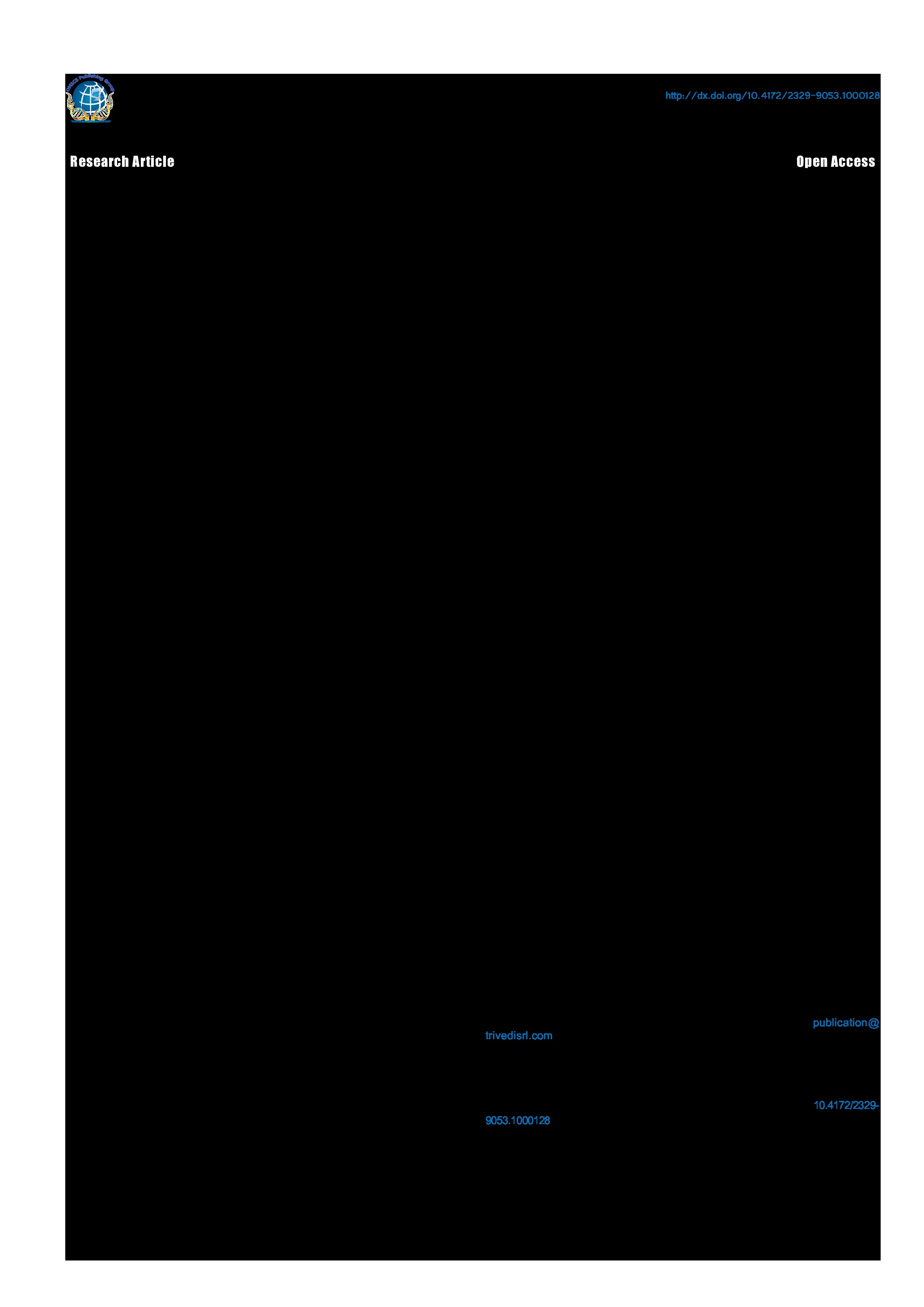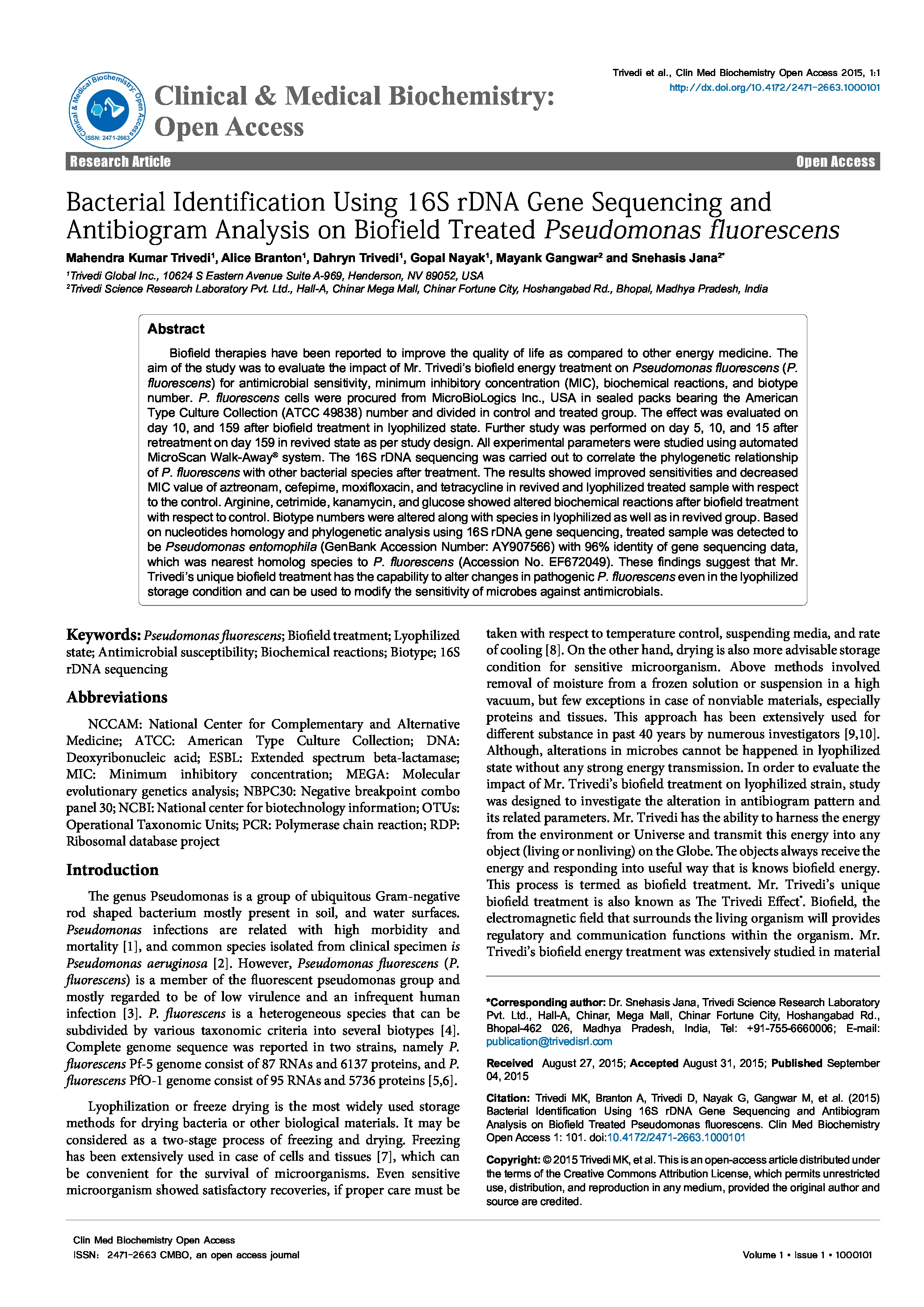Date of upload:
12.08.2016
Co-author:
Rama Mohan Tallapragada, Alice Branton, Dahryn Trivedi, Gopal Nayak, Rakesh Kumar Mishra, Snehasis Jana
Abstract:
Triazoles are an important class of compounds used as core molecule for the synthesis of many pharmaceutical drugs. The objective of the present research was to investigate the influence of biofield treatment on physical, spectral and thermal properties of 1,2,4-triazole. The study was performed in two groups, control and treatment. The control group remained as untreated, and biofield treatment was given to treatment group. The control and treated 1,2,4-triazole were characterized by X-ray diffraction (XRD), Differential Scanning Calorimetry (DSC), Thermo Gravimetric analysis (TGA), Surface area analyzer, and Fourier transform infrared (FT-IR) spectroscopy. XRD analysis revealed a decrease in unit cell volume of treated 1,2,4-triazole (662.08 10-24 cm3) as compared to control sample (666.34 10-24 cm3). Similarly, a decrease in molecular weight of treated 1,2,4-triazole (69.78 g/mol) with respect to control (70.23 g/mol) was observed. Additionally, a substantial decrease in crystallite size (G) was observed in treated 1,2,4-triazole by 16.34% with respect to control. DSC analysis showed a slight increase in melting temperature of treated 1,2,4-triazole (124.22°C) as compared to control (123.76°C). Moreover, a significant increase in latent heat of fusion was noticed in treated 1,2,4-triazole by 21.16% as compared to control sample. TGA analysis showed a significant increase in maximum thermal decomposition temperature (Tmax) of treated 1,2,4-triazole (213.40°C) as compared to control (199.68°C). Surface area analysis using BET showed a substantial increase in surface area of the treated compound by 13.52% with respect to control. However, FT-IR analysis showed no structural changes in treated 1,2,4-triazole with respect to control. Overall, the result showed significant alteration of physical and thermal properties of the treated 1,2,4-triazole with respect to control.




